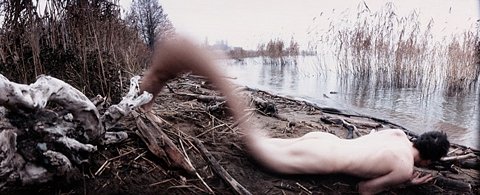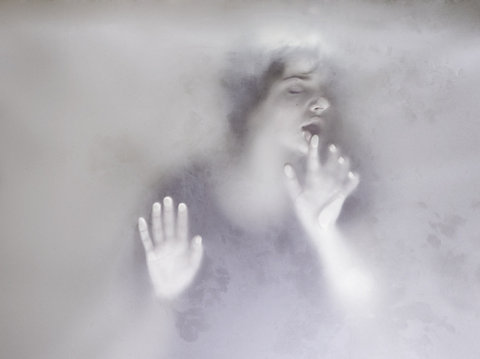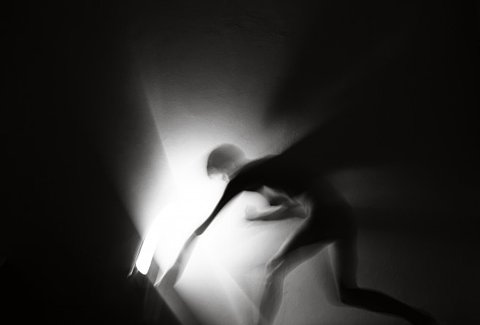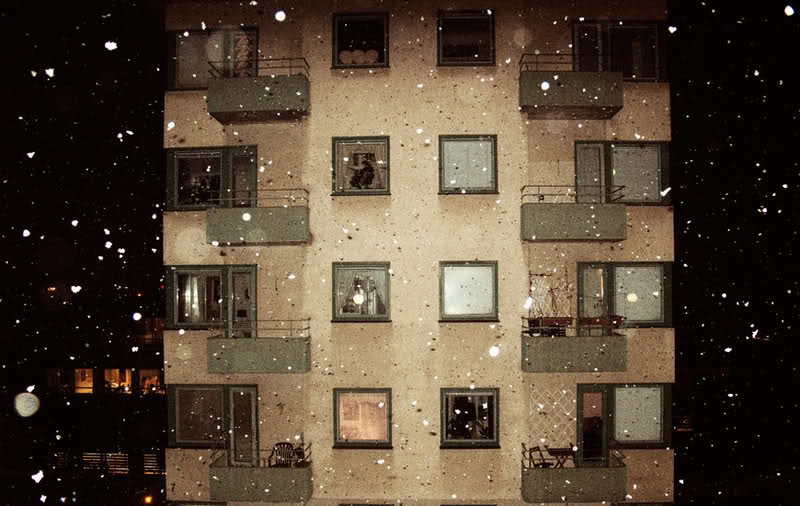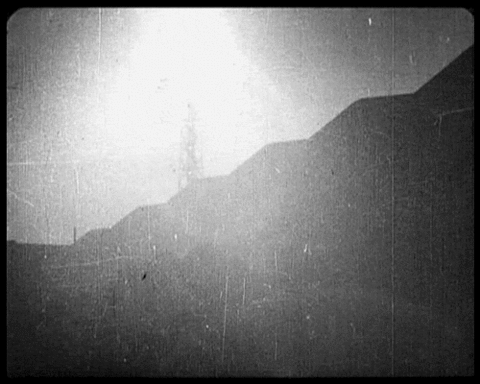Anderson, Jaynie (eds), Crossing cultures : conflict, migration and convergence : the proceedings of the 32nd International Congress of the History of Art, pp. 959-962, Miegunyah Press, Melbourne, Victoria)
Elements of New Media moving-image work can be traced back into the body of experimental film. This is a trace that has been erased under Australian conditions. It is argued that such an overwriting is a ‘traditional’ cultural response also evident in a marking of the migrant as ‘New Australian.’ Such blindness can be contrasted to the situation in Canada. There a tradition of reflexive dialogue between technology and identity has been maintained in the move from the old to the new. As a representative text, Canadian Mike Hoolboom’s personal digital-video work Tom (2002) effectively migrates old experimental filmmaking techniques into the digital ‘new.’
Tom is hard to categorize. A hybrid video, benefiting from the convergence in digital media, it can be read as an experimental documentary, a fiction, biography, autobiography, an animation, a historical document, or all of the above. It documents the private and public life of New York film and video artist Tom Chomont’s struggle with HIV and Parkinson’s disease as he recounts memories of infanticide, incest, fetishism and death. The video also excerpts Chomont’s short films including Phases of the Moon (1968) and Sadistic Self Portrait (1994). This is at time a confronting work, not specifically because of the HIV backdrop to this story but because of the taboo subjects of infanticide and incest recounted in the video. Assembled from scavenged footage and diaristic imagery, this material has been reprocessed and layered through an array of digital effects.
This digital work has been influenced by a long line of North American avant-garde practice that includes painter and filmmaker Jack Chambers and also enunciates ideas outlined by Brazilian media theorist Vilem Flusser about migration. Hoolboom’s work can be framed historically through Canadian theorists on technology such as George Grant and Harold Innis and also Arthur Kroker’s more contemporary panic theorizing. The resultant structures can be read as the architecture of a phenomenologically remembered history of the body and cinema.
The New as Eraser
It is asserted that there is a connection between new digital media and the old analogue ‘materialist’ media of experimental film. Small’s ‘direct theory’ indicates that the experimental has had a history of dealing with its images conceptually.1 Malcolm Le Grice, structuralist filmmaker, founding member of the 1960s London Filmmaker’s Co-op states in Experimental Film in the Digital Age that ‘The tradition of experimental film and video has already provided the basis for exploring these concerns (of non-linearity) not as a response to the new technology but as a consequence of artistic reflection on the human condition.’2
Locally, there has been a vigorous ‘tradition’ of experimental film emanating out of Melbourne, facilitated by Cantrill’s Filmnotes since the early 1970s, independent screenings and more organized activity through the Melbourne Super 8 Group (early 1980s), Fringe Network and MIMA (Modern Image Maker’s Association). With the increase of digital production in the 1990s, MIMA (now a national organization) changed its name to Experimenta, embracing New Media more emphatically, and moved away from analogue moving-image work. Cantrill’s Filmnotes, an independent font of experimental documentation and rhetoric, also ceased publishing after more than twenty years of activity. As a participant and a witness to such shifts, I would suggest that this ‘shift’ went beyond a change of emphasis and that, in fact, such analogue activity ceased to be addressed within and profiled by cultural institutions. Such work at best ‘returned’ to an underground subsistence often in what has become known as ‘micro’ or ‘boutique’ cinema environments. With film artists Marcus Bergner and film critic Vikki Riley, this writer was involved in one such ‘response’ at the Café Bohemio in Fitzroy in the mid 1990s.
So, the suggestion being made is that the connection between analogue and digital non-linear moving-image production and public profile was experienced as ‘lost’ under local Melbourne conditions. Canadian experimental filmmaker Mike Hoolboom’s Tom is presented here to suggest that such an outcome was not ‘inevitable.’ This shift has played out differently in other localities. Tom signposts a historical line of practice that survived and migrated successfully into digital production in a manner not evident in Australia or Melbourne particularly.
Again, speaking from personal observation, when this writer’s creative practice migrated from such old technologies of 16-millimetre and Super 8 film production to the new, in some virtual way my parents’ initial migration to Australia from the Netherlands in the late 1950s was being re-enacted. Migrating to New Media was like being asked to become a ‘New Australian’ again. ‘New Australian’ was both a populist and official term in Australia in the 1960s used to identify and make ‘welcome’ the migrants in their ‘adopted’ country. Those who wore this term were implored to forget their old idea of who they were, their history. It is all about the future, leave the past behind by coming ‘here.’
For the migrant, whether geographic or technological, there are resistances to such ideas. It is a double message. To be embraced as a ‘New Australian’ had a pejorative edge, as an empty officially sanctioned term or identity that placed those so named on an outside masquerading as inside. Becoming a (New) Australian assumed and expected an erasure of your past. In a way you were being reused, recycled, but seen to be of limited value in this new equation. Vilem Flusser may say that such a migrant experience now captures a general impact of technology.3 We are all overtly mobile as migrants, nomads, stateless, or in at least two states at once.
Ironically, there is a tradition of the way the new displaces the old that can be read into such discounting, marginalization of erasure and this sense can be applied to ‘New Media’ in Australia. This is a tradition of erasure and denial founded on that moment when a British Flag was posted to maker the arrival of the First Fleet on Australian soil coupled with the implication ‘there is nothing here.’ My parents were initiated into this mindset as ‘New Australians,’ and I was reconstituted into a New Media maker where the past had no perceived or recognized currency. In this way the gesture of ‘there is nothing here’ repeats itself through ideas of national identity, its institutions and its cultural activity. Terra nullius is itself a tradition. We place new things on the table and pretend it’s a clean slate. Yet we have a history that needs to be identified. Australians have ‘form.’
Canada
In such a locality capable of sabotaging its own sense of ‘place,’ there is a potential for some self-aware reflexive New Media work to address the situation. Tom is presented as such a work. It is no accident that these strategies arise out of another ‘settler colony’: Canada. There too a colonial mind-set, Margaret Atwood contends, has led to a victim mentality. ‘Let us suppose, for the sake of argument, that Canada as a whole is a victim, or an “oppressed minority” or “exploited”… Let us suppose in short that Canada is a colony.’4 Add to this Kroker’s observation that the Canadian discourse ‘is situated between the failure of the New World and the past of European culture’5 and we can identify further commonalities.
The problem for new-world art, wrote Canadian experimental filmmaker and painter Jack Chambers in 1969, is that it ‘runs the risk of an impoverished materialism through omitting the historical dimension.’6 But ‘Where North American artists do embody an historical dimension is in the medium of personal filmmaking. They form a major part of film’s “roots” and are making enormous advances in the organic-mind growth of this art.’7 It is within such an orientation that a historical connection has been maintained in Canada. It is a connection to which Hoolboom is responsive. It is a maintained critical tradition that further exemplifies Chamber’s assertion that ‘Technology is a historic process that learns from itself and perpetuates what it learns by a tradition, thereby passing on the accomplishments of its own history.’8 Through the critical thinking of Canadian theorists like George Grant, Harold Innis and Arthur Kroker it is argued that this ‘historical’ method enables the margins to resist the centre.
For Grant a resistant historic attitude to technology was required to preserve a civil society’s ‘common good.’ Grant argued that ‘We can hold in our minds the enormous benefits of technological society, but we cannot so easily hold the ways it may have deprived us, because technology is ourselves.’9 Already, the framing of colonization not only between nations but also as residing within the individual is evident here. Grant’s observation that in this situation ‘only in listening for the intimations of deprival can we live critically in that dynamo’10 offers a fault line out of this predicament taken up in Kroker’s postmodern theorizing about New Media and Hoolboom’s synchronous moving-image work. Kroker’s need to articulate a world of ‘dead identities, dead vision, and an overwhelming sense of inner dread and anxiety’11 was utilized in his postmodern theorizing about trash culture12 and panic bodiesl.13
According to Kroker, Innis ‘sought to preserve some critical space in Canadian discourse for the recovery of an authentic sense of time.’14 Innis argues that to foster a stable Western culture like Canada, the countervailing centrifugal and centripetal forces of time-duration and space-territory needs to be in balance.15 The migration of technique from the United States, as advanced technological society, to Canada (as advanced dependent state) is evidenced in the triumph of the colonizing monopolies of space (that is, the global electronic media). As if reworking Grant’s criticism into dynamic form, Innis argues the need for a cultural impulse to recover time, to remember. In this constructed cultural script the personal cinema of Hoolboom (and Chambers) can be read as enabling authentic civil discourse, enabling a cultural remembering within Canada. Both artists achieved this by critically reordering the debris of commercial media activity.
Tom
The painter Francis Bacon observed that ‘When one looks at something, one’s not only looking at it directly, but one’s also looking at it through the assault that has already been made on one by photography and film.’16 Having contextualized Tom within Canadian media criticism I now wish to frame Hoolboom’s work within this kind of looking, one that suggests a visceral awareness of its own historicity.
The ability to construct a complex visual narrative from disparate visual material is a developed skill that is the product of that evolving dialogue with technique that the artist journeys through, to get on top of their chosen art form. Often quite apart from the content of the work, the painter or the sculptor develops an intimate relationship with the materials used. This involves the development of an array of cluster of techniques that, Chambers has already argued in the case of film, can be transferred as a developing knowledge, a process between artists over time. Hoolboom’s video arrives on screen after a number of generational cycles of such processing of technique.
There is a mixture of the collector, the database, the gleaned and the personal present in Hoolboom’s video, as is a narrative of catastrophe and decay, brought home through a methodology of collage and metaphor. It registers on Chomont’s HIV-riddled body and on the real and imagined streets of New York.
This database includes black-and-white and colour shots gleaned from industrial films, educational documentaries and Hollywood blockbusters, often thematically arranged in sequences of doors, water, New York, construction and so on; sped up, slowed down and frozen; time-lapse and pixilated films; double and triple exposures; cinema verité video footage, personal and found photographs; animated artifacts; excerpts from Chomont’s own films; hand-processed, abstract, personal and so on. Such a list articulates parallel orchestrations of both technique and content. This is the promenade of ‘technical images’ that Flusser identified: ‘The universe of technical images, as it is about to establish itself around us, poses itself as the plenitude of our times, in which all actions and passions turn in eternal repetition.
Anecdotally and conversationally driven by Tom Chomont’s recounting in voice-over or directly to the camera is the remembering of often difficult, significant events of his life. Such ‘revelations’ are then interspersed by long setions with music and sound design, with no verbal (oral) storytelling. Yet these images address and continue this oral flow.
In this rhythm we start with a pared-down concentrated statement, a revelation, a shock, a personal exposure by Chomont. It might be about the forced marriage of his teenage mother during the Depression, the death of his baby sister through his mother’s neglect, his ongoing incestuous relationship with his brother, the New York fetish scene, his father’s and brother’s deaths, Chomont’s film work or his HIV treatment and bodily decay. Then we get a dense and often layered collage of imagery that takes us through, somehow, the ‘implications’ of these revelations at this other ‘silenced’ level. These visual collage sections seem to process the events emotions, bodily and historically.
These are not dreams being shown, but, it seems, manifest emotions and thoughts that are being processed on screen. They are not overtly political, nor parody nor irony. It is something more direct and immediate, what in New Media has been termed ‘immersive.’ These images can also be addressed through that pre-reflective space central to Merleau-Ponty’s phenomenology. These images operate like the mental imagery of externalized thought processes. Recycling used images as Tom does, adding personal and emotional values at variance to its originating effect, this compilation is about sampling the spectacle. Adding a critical layer of collagic spin to a spiraling dialogue with technology. Intensifying those strategies and techniques initially developed within an experimental tradition.
With a performative knowledge of ‘technology as history’ Hoolboom is still able to enact the personal critically and politically within digital-media forms to reconfigure the immersive onslaught of the technical image into our daily lives.
Artists whose inner space is infected psychologically and psychically by leukemia (as Jack Chambers was) and HIV (as Hoolboom and Tom Chomont are) are well placed to use their colonized, invaded bodies, their panic bodies, as databases to directly articulate such depravity.18 This can reflect something of the traumatic, victim or colonial situation of their dissolving nation-states in the face of an onslaught of Innis’s now global monopolies of space.
It seems as if the surface of cinema itself is the body that is being marked and reconstituted and ‘the personal’ forever challenged and changed by the infection of this material into the psyche. For observers there is a directness about this infection that makes it our infection, in our heads, our eyes and our heart. We can walk away from the cinema and our screens with that self-belief back in our bodies; that the tools are available to reinvent our selves out of the ‘new disturbances’ that Kroker identifies. ‘Unlike billboards in the age of pavement, these advertisements are injected directly into the veins of the post-flesh body like bar codes burned into flesh.’19 In Tom, Hoolboom value-adds onto such a trashed history.
Notes
1. Edward Small, Direct Theory: Experimental Film and Video as Major Genre, Southern Illinis University Press, Carbondale, IL, 1994.
2. Malcolm le Grice, Experimental Cinema in the Digital Age, British Film Institute, London, 2001, p. 295.
3. Anke Finger (ed.), The Freedom of the Migrant: Objections to Nationalism, University of Illinois Press, Champaign, IL, 2003.
4. Margaret Atwood, Survival: A Thematic Guide to Canadian Literature, House of Anansi, Toronto, 1972.
5. Arthur Kroker, Technology and the Canadian Mind: Innis McLuhan Grant, St. Martin’s Press, New York, 1985, p. 7.
6. Kathryn Elder, The Films of Jack Chamber, Indiana University Press, Bloomington, IN, 2002, p. 35.
7. ibidl, p. 43.
8. ibid., pg. 35
9. George Grant, Technology and Empire: Perspectives on North America, House of Anansi, Toronto, 1969, p. 137.
10. ibid.
11. Kroker, p. 22.
12. Arthur Kroker and Michael Weinstein, Data Trash: The Theory of the Virtual Class, St. Martins Press, New York, 1994.
14. Kroker, p. 124.
15. Harold Innis, The Bias of Communication, University of Toronto Press, Toronto, 1951; see also Harold Innis and Mary Innis, Empire and Communications, University of Toronto Press, Toronto, 1972.
16. David Sylvester, Interviews with Francis Bacon, Thames and Hudson, London, 1975, p. 30.
17. Vilem Flusser, Towards a Philosophy of Photography, Reaktion, London, 2000, p. 20.
18. Kroker, Kroker and Cook.
19. Kroker and Weinstein, p. 109.



